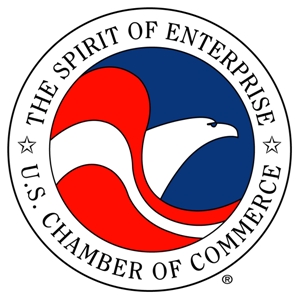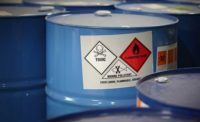 On March 26, OSHA published in the Federal Register a final regulation that modifies OSHA’s Hazard Communication Standard (HCS) to conform to the UN’s Globally Harmonized System of Classification and Labeling of Chemicals (GHS). It requires chemical manufacturers to use revised criteria for classification of chemical hazards, revised labeling provisions, and a specified format for safety data sheets. There are also revised requirements for employers to train their employees regarding labels and safety data sheets for hazardous chemicals. The concept of this regulation is one that has merit but the way OSHA issued it creates some very significant problems.
On March 26, OSHA published in the Federal Register a final regulation that modifies OSHA’s Hazard Communication Standard (HCS) to conform to the UN’s Globally Harmonized System of Classification and Labeling of Chemicals (GHS). It requires chemical manufacturers to use revised criteria for classification of chemical hazards, revised labeling provisions, and a specified format for safety data sheets. There are also revised requirements for employers to train their employees regarding labels and safety data sheets for hazardous chemicals. The concept of this regulation is one that has merit but the way OSHA issued it creates some very significant problems.
Myth 1: This regulation will save employers money rather than cost them money--$2.5 billion over 5 years. The Secretary of Labor has claimed this would save employers $475 million per year and the administration has claimed elsewhere this would save $2.5 billion over five years. This is largely based on the notion that by homogenizing the labeling and data sheet requirements between the U.S. system and the international system, producers of chemicals will no longer have to produce two versions. Even if the administration's calculations are accurate--and there are many reasons to doubt them--this amount of savings spread throughout the 5 million workplaces OSHA estimates are covered by this standard over 5 years means the actual savings per company will be between negligible and irrelevant: approximately $95 per year.
Myth 2: This is a "look back" regulation and shows this administration's determination to purge old, outdated regulations. This rulemaking was initiated by the Bush administration. For this administration to take credit for it is totally disingenuous. Indeed, the proposal for this regulation was published shortly after this administration came into office, well before the issuance of Executive Order 13563 which launched the regulatory look back effort. Nor was this regulation driven by any of the already existing requirements to conduct retrospective reviews like Section 610 of the Regulatory Flexibility Act.
Myth 3: The new "hazards not otherwise classified" category will not create any problems.
OSHA took a widely supported regulatory concept and managed to mess it up with an open-ended, undefined new category for "hazards not otherwise classified." Producers of covered chemicals and users of these chemicals will now have to divine what other hazards OSHA will expect them to cover in their safety data sheets and training that are beyond the specific and objectively identified hazards already included in the regulation. This uncertainty means they will never know when they have satisfied the requirements of this regulation. This new requirement contradicts the precise hazard categories and specific criteria defining these categories around which the regulation is structured.
Myth 4: Combustible dust is already covered by OSHA’s HCS so linking it to the new regulation is no different.
Combustible dust is a complex, site specific hazard and is not intrinsic to any specific substance; several conditions must occur simultaneously for the hazard to exist. There is no OSHA standard regulating combustible dust, nor is there a precise definition. Despite an ongoing rulemaking where the issues surrounding combustible dust should be resolved, OSHA has included combustible dust among the physical hazards of chemicals that producers and users will have to identify. Producers will now have to determine what conditions downstream could lead to a chemical producing a combustible dust hazard. Furthermore, the GHS/HCS regulation is specifically about chemicals while combustible dust hazards occur with many substances and materials that are not covered by the GHS such as paper, metal, plastics, and agricultural goods which means that producers and employers who are not familiar with the GHS will now have to determine whether they have to deal with it, and then will be at the mercy of OSHA's determination of whether there is a hazard present.
Myth 5: The Chamber supports this regulation.
The Chamber’s comments expressed support for unifying the two sets of labeling and classification requirements. However, we made clear that several problems with the proposed regulation needed to be fixed: the unclassified hazard provision (now called hazards not otherwise classified); the coverage of combustible dust; and the sequencing of the compliance deadlines (training before labels and safety data sheets to be complete). Notwithstanding our very clear statements, the Secretary of Labor at a hearing on March 21 said the Chamber supports this regulation. This is a serious distortion of our position. The fact that OSHA did not cure the problems we identified is an example of why employers are so distrustful of this administration in general and OSHA in particular.
Five Myths About OSHA's new hazard communication regulation


